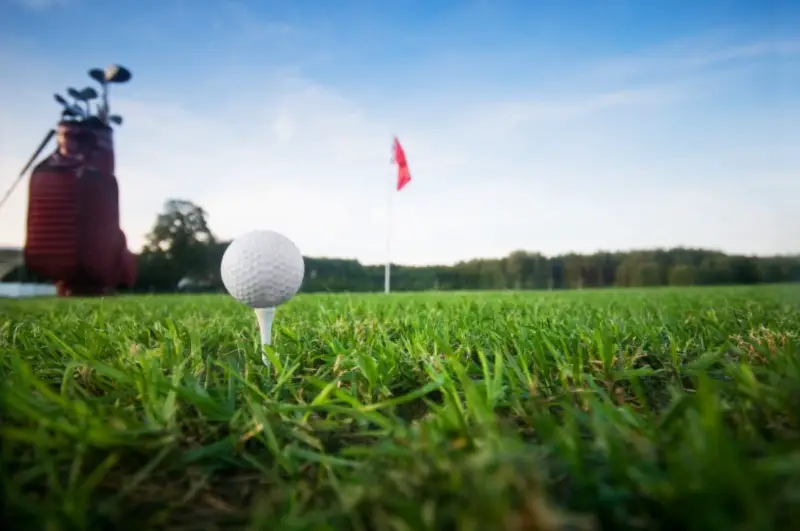Golf, a game of precision and technique, offers an intriguing blend of competition and tranquility. Each element plays a vital role in enhancing your performance, and one aspect that often remains undervalued is the choice of the golf ball.
Golf balls may appear the same to the untrained eye but are composed of various materials and designs, each impacting the ball’s flight and performance characteristics. For golfers with high swing speeds, typically around 105 mph or above, a specific golf ball can help maximize distance and control.
This article will provide a comprehensive, step-by-step guide on choosing the ideal golf ball for high swing speeds and how this can be a game-changer for your golf rounds.
Importance of Golf Ball Selection
Choosing a golf ball that complements your swing speed is essential because the right ball can enhance your distance control, spin rate, and trajectory. A golf ball with a higher compression rating is usually the best choice for golfers with high swing speeds.
A golf ball, seemingly simple, is quite a marvel of engineering. The outer cover, typically made of urethane or Surlyn, plays a crucial role in controlling the spin and durability of the ball. Many high-swing speed golfers prefer a urethane-covered ball due to its softer feel and high-spin characteristics.
Next is the core. A softer core compresses easily on impact, making the ball travel further. For golfers with high swing speeds, balls with firm cores are more suitable as they offer lower spin rates for longer drives. This perfect balance between core firmness and outer layer flexibility makes a ball ideal for high-swing speed golfers.
How to Choose the Right Ball

Choosing the perfect golf ball for high swing speeds involves carefully considering several aspects of your game and the ball itself. Let’s break it down step-by-step:
Step 1: Evaluate Your Swing Speed
Swing speed is the velocity at which you hit the golf ball with your club and is generally measured in miles per hour (mph). Having a high swing speed means you can transfer more energy to the ball, resulting in greater distances.
Understanding your swing speed is the starting point for choosing the right golf ball. Many players estimate their swing speed based on their driving distance. While this can provide a rough idea, there are more accurate measures.
One of the best golf simulators on the market is recommended for a precise assessment. These machines use radar or optical sensor technology to accurately measure your swing speed, helping you better understand your playing style.
Step 2: Consider the Compression Rate
Next up is the compression rate. This refers to how much the golf ball squashes or compresses upon impact with the club.
High-compression golf balls (usually with a rating of 100 and above) are harder and require a powerful swing to compress them effectively and achieve optimal distance. If your swing speed is high, a ball with a high compression rate will suit you as it will efficiently transform the energy from your swing into the distance.
Step 3: Look at the Ball Construction
The construction of the golf ball has a significant impact on its performance. Most high-swing speed golfers will benefit from multi-layer golf balls, typically consisting of three or four layers, including a core, one or two intermediate layers (mantle), and a soft outer layer (cover).
The golf ball’s core, often made of rubber or synthetic rubber, is designed to provide explosive distance off the tee. The mantle layer(s) work with the core and cover to control spin and increase the ball’s speed. The cover of the ball, usually made from urethane, interacts with the clubface for spin control and feel.
Step 4: Understand the Spin Rate
The spin rate of a golf ball is another vital consideration. For high-swing speed golfers, a golf ball with a lower spin rate of the driver and a higher spin around the greens is often ideal.
Lower spin off the tee helps the ball travel in a straight line, minimizing the chances of hooks or slices, thus allowing for longer drives. Conversely, a higher spin around the green gives you better control, allowing you to stop the ball quickly on the green and potentially get closer to the pin.
Step 5: Test Different Golf Balls
Once you’ve acquired this knowledge, it’s time to hit the course or golf simulator. Testing different golf balls will give you first-hand experience of each ball’s performance under your unique swing conditions.
Remember, the ideal golf ball should feel right when you strike it, and most importantly, it should improve your game. Your ideal golf ball is the ball that provides you with the most extended, straightest drives and gives you excellent control around the green. It might take some time and experimentation, but the result is worth it.
Final Words
Finding the perfect golf ball for high swing speeds may require time and experimentation. Remember, while swing speed is a significant factor, your skill level, playing style, and personal preference should also influence your decision.
With the right golf ball, not only can you optimize your high swing speed, but you can also gain a competitive edge on the golf course. So, take your time, follow these steps, and prepare to take your game to the next level.






